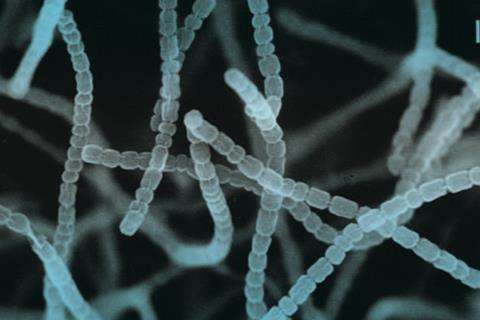In the world of agriculture, rice is a staple food for more than half of the global population, making its cultivation crucial for food security. However, the rice blast fungus Pyricularia oryzae (syn. Magnaporthe oryzae) poses a significant threat to rice crops, causing extensive damage and leading to substantial yield losses.
Traditional methods of controlling this pathogen often rely on chemical fungicides, which can have detrimental environmental impacts and contribute to the development of resistant strains. Therefore, researchers are increasingly exploring alternative strategies that leverage natural microbial interactions to promote plant health and manage diseases more sustainably.

READ MORE: Scientists discover gene for immunity against a disease that ravages rice and wheat crops
READ MORE: Study IDs seccret of stealthy invader essential to ruinous rice disease
In a recent study led by Assistant Professor Yuuki Furuyama from the Department of Applied Biological Science at Tokyo University of Science (TUS), a team of researchers aimed to investigate the relationship between P. oryzae and the beneficial soil bacterium Streptomyces griseus. The research team included Ms. Risa Sugiura, Prof. Kouji Kuramochi, Prof. Takashi Kamakura, and Dr. Takayuki Arazoe, all from TUS, as well as Dr. Takayuki Motoyama from the Institute of Physical and Chemical Research and Dr. Hiroyuki Osada from the Institute of Microbial Chemistry. Their study was published on 23 September 2024 in Environmental Microbiology Reports.
P. oryzae increases pH
“While extensive research has been conducted on how rice blast fungi infect their host rice plants, many aspects of their life cycle remain poorly understood. Our study aims to shed light on the interactions between rice blast fungi and other microorganisms in the soil, exploring the crucial part of their life cycle beyond the infection process,” explains Dr. Furuyama. To investigate these interactions, the team conducted a series of experiments involving cocultures of P. oryzae and S. griseus. They measured the pH changes in the growth medium and observed the effects on S. griseus growth under various conditions.
Their findings revealed that the presence of P. oryzae significantly increased the pH of the medium, which, in turn, promoted the growth of S. griseus. Notably, this growth enhancement was independent of direct contact between the two microorganisms, suggesting that P. oryzae produced non-volatile alkaline compounds responsible for this effect.
The study also highlighted that, other pathogenic fungi, such as Fusarium oxysporum and Cordyceps tenuipes, did not induce similar growth in S. griseus, indicating that the observed interaction is specific to P. oryzae. Additionally, the researchers ruled out ammonia as the compound responsible for pH increase, leading them to propose that polyamine produced by P. oryzae might be the active growth-inducing agent.
Step toward more sustainable agriculture practices
The discovery of this unique microbial interaction has significant implications for the development of sustainable agricultural practices. S. griseus is known for its ability to produce antibiotics, which can suppress the growth of pathogenic microorganisms. By promoting the growth of S. griseus, P. oryzae may inadvertently create conditions that could be harnessed to control its own spread. “Our findings suggest that S. griseus could be used as a biocontrol agent in rice fields, offering an alternative to chemical fungicides,” says Dr. Furuyama. “If we can enhance the growth of S. griseus in rice paddies, we may be able to reduce the impact of rice blast in an environmentally friendly way,” adds Dr. Furuyama.
Additionally, the study offers valuable insights into the ecological role of P. oryzae, indicating that this fungus may influence the composition and dynamics of microbial communities in the soil. The researchers propose that their findings could have broader implications for our understanding of how pH modulation affects microbial interactions, paving the way for the development of innovative biocontrol strategies for managing other plant diseases as well.
With this groundbreaking discovery, the team has taken a crucial step toward more sustainable agricultural practices. The potential to harness the power of microbial interactions to combat rice blast could revolutionize the way we approach disease management in rice crops, offering hope for a future with less reliance on harmful chemical agents.
Topics
- agriculture
- Agriculture
- Asia & Oceania
- Bacteria
- Cordyceps tenuipes
- Food Microbiology
- Food Security
- Fungi
- Fusarium oxysporum
- Healthy Land
- Hiroyuki Osada
- Kouji Kuramochi
- Magnaporthe oryzae
- Pyricularia oryzae
- Research News
- rice blast fungus
- rice crops
- Risa Sugiura
- Soil & Plant Science
- soil microorganisms
- Streptomyces griseus
- sustainable agriculture
- Takashi Kamakura
- Takayuki Arazoe
- Takayuki Motoyama
- Tokyo University of Science
- Yuuki Furuyama







No comments yet